Search
Search Results
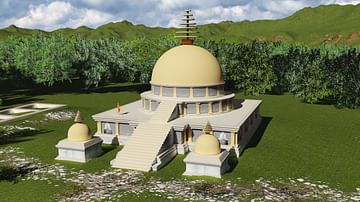
Definition
Taxila
When it comes to ancient history, Pakistan contains its fair share of treasures, one of the prominent of these being the ancient metropolis of Taxila. It is a city of the Gandharan civilization, sometimes known as one of its capitals, whose...
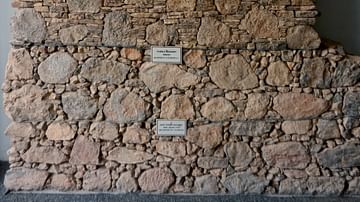
Image
Construction Methods in Ancient Taxila
The various levels of construction in the cities and monuments of Taxila from the oldest (bottom) to the latest (top) as recreated at Taxila Museum. -Early Rubble Masonry: 2nd cent BCE and earlier (Bottommost) -Rubble Masonry: 2nd cent...
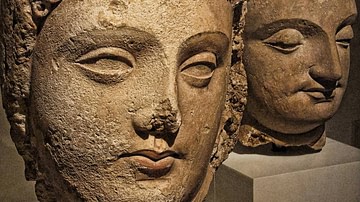
Definition
Gandhara Civilization
The Gandhara Civilization existed in what is now Northern Pakistan and Afghanistan from the middle of the 1st millennium BCE to the beginning of the 2nd millennium CE. Although multiple major powers ruled over this area during that time...
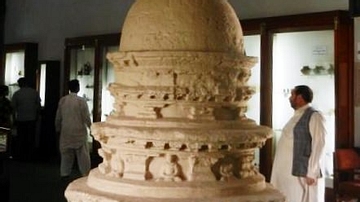
Image
Cast of Commemorative Stupa, Taxila
The original stupa is still in its location at the Mohra Moradu Monastery complex and a plaster cast of it has been placed at Taxila Museum. It depicts an exaggerated version of a stupa built to commemorate a high level monk at the monastery...
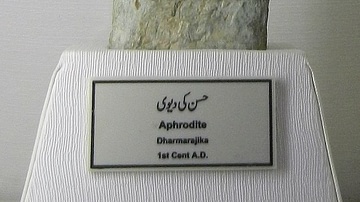
Image
Aphrodite, Taxila
Schist stone sculpture representing Aphrodite. The statue showcases the Indianized proportions of the Greek deity. Found at Dharmarajika Stupa. 1st century CE. (Taxila Museum, Punjab, Pakistan)
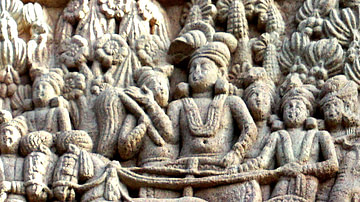
Definition
Ashoka the Great
Ashoka the Great (r. 268-232 BCE) was the third king of the Mauryan Empire (322-185 BCE) best known for his renunciation of war, development of the concept of dhamma (pious social conduct), and promotion of Buddhism as well as his effective...
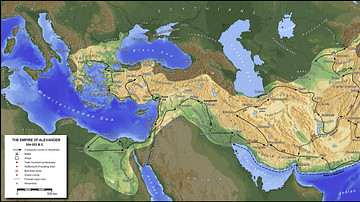
Article
Cultural links between India & the Greco-Roman world
Cyrus the Great (558-530 BCE) built the first universal empire, stretching from Greece to the Indus River. This was the famous Achaemenid Dynasty of Persia. An inscription at Naqsh-i-Rustam, the tomb of his able successor Darius I (521-486...
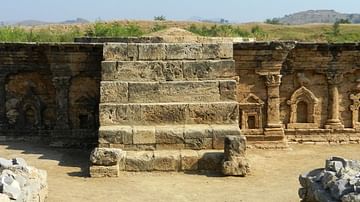
Image
Double-Headed Eagle Stupa
Front view of the double-headed eagle stupa shrine at Sirkap, Taxila. Dated 30 BCE – 80 CE from the Scytho-Parhian era. It is presumed that the Scythians brought in this most probably Babylonian symbol with them from the West.
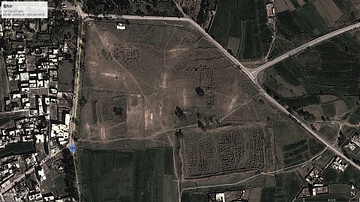
Image
Bhir Mound Excavations
Google Earth view of Bhir Mound archaeological site excavations at Taxila, 6th-2nd Cent BCE. Image © 2015 Digital Globe
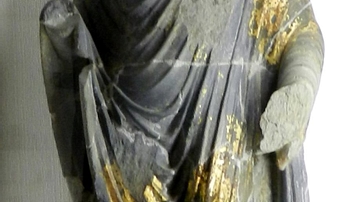
Image
Gilded Buddha Statue
A sculpture of the Buddha with some of the original gold leaf still intact. This shows the extravagance with which these statues were decorated. 2nd-3rd century CE. (Taxila Museum, Punjab, Pakistan)